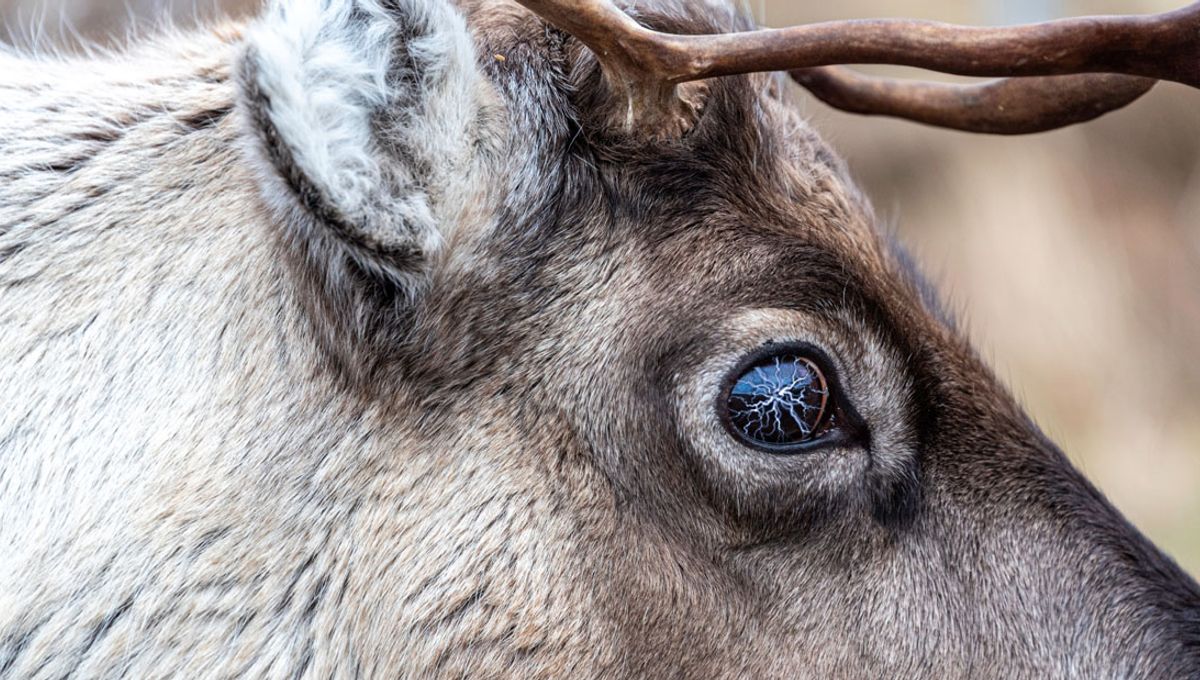
In 2016, a lightning storm rolled across the Hardangervidda plateau in Norway. When the skies cleared, wildlife officials stumbled upon a haunting scene: the bodies of 323 wild reindeer all huddled together.
It seemed like a grim mystery, but the massive thunderstorm that afternoon led the Norwegian Environment Agency to suspect the mass death was the result of a thunderstrike; whether it was one strike or several was harder to ascertain. Most of the reindeer didn’t look as if they’d been struck directly, which is what you would expect to see when animals die from the ground current. It’s difficult to say for certain, but the lack of multiple impact craters makes it seem likely that the reindeer huddled in just the wrong spot to be taken out by the ground current from a single strike.
It marked one of the largest documented mass mortality events for reindeer, but some scientists saw an intriguing opportunity. The animals heads had to be removed to test for chronic wasting disease, the same illness behind “zombie deer disease”, but their bodies were left behind to see what life gets up to in the wake of all that death.
Yes, there’s lots of science to be done when it comes to the decomposition ecosystem, and suffice it to say the corpses of 323 deer were enough to bring the scavengers in. So, a team of scientists established a study site where the carcasses lay within a patch 240 by 100 meters (787 by 328 feet), though most were concentrated within a space of just 50 by 50 meters (164 by 164 feet).
They wanted to see how the sudden appearance of so many carcasses altered the behavior of rodents. Turns out, when the bodies pile high it creates a “landscape of fear” as the likelihood of a scavenging predator turning up becomes that much higher.
Carcasses can provide vital nutrients within an ecosystem, but they also represent islands of risk for small prey species like rodents. Nothing worse than nipping out for a walk between the reindeer only to find a fox has rolled into town, and suddenly there’s one more piece of dead meat.
These landscapes of fear had been studied before, but never in the context of a natural mass mortality event like our ill-fated reindeer. This study therefore represented the first time scavenger-induced fear had been studied in this context, and it demonstrated how rodents will adapt their behavior as the bountiful resource decomposes and breaks down.
In the first year, ravens were everywhere and the rodents seemed to disappear. As the reindeer broke down and the ravens moved on, the rodents started to reappear in previously avoided areas. There seemed to be a strong avoidance by the rodents in areas visited by ravens, but not so much where the foxes were visiting. It could be that this came down to the fact that rodents are active in the day, same as ravens, so were more likely to encounter these predators during their waking hours.
Like any carcass in the wild, the bodies from mass mortality events can pass on the danger to prey species in the wild, but as the bodies clear, that danger ebbs away. It seems rodents’ ability to adapt in such a landscape of fear is just another reminder that death really is a natural part of life.
Source Link: In 2016, 323 Deer Died In A Freak Lightning Strike And Taught Us A Lot About Life After Death